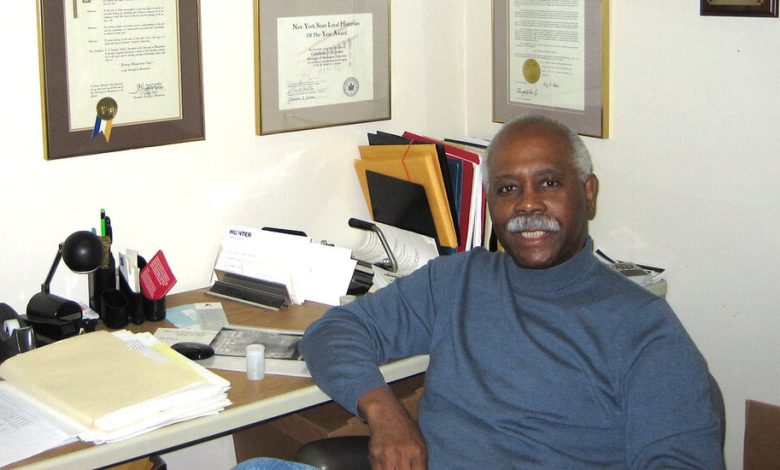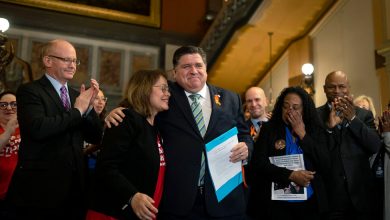Celedonia Jones, Self-Educated New York Historian, Dies at 93

One day last year, Celedonia Jones, a charismatic, self-educated historian, stood on a patch of land in Manhattan that in the 19th century was within Seneca Village, a largely Black community of about 300 people that would become part of Central Park.
“What happened to the people?” Mr. Jones, who was known as Cal, told “CBS Sunday Morning” for a segment about Seneca Village, which stood from 1825 to 1857 between what are now West 82nd and West 89th Streets on the western side of the park. “Where did they go?”
One of them — Andrew Williams, a free Black man who shined shoes and who was among the first African American property owners in the neighborhood — became the focus of Mr. Jones’s historical research in 2018.
“He was a visionary,” Mr. Jones said in the interview. “I can see him building the house off the road.” Then, pointing to a real estate map of the village, he said, “You can see his two lots.” (There were actually three.)
Mr. Williams paid $125 for his land and, with the $2,335 he received from the city to leave (not the $3,500 he had demanded), acquired property in Queens.
The Institute for the Exploration of Seneca Village History, a group of scholars dedicated to the study of the site, brought Mr. Jones on as an adviser in about 2007. Cynthia R. Copeland, president of the institute, said that because of his knowledge of people in city agencies, he was able to help the group navigate its requests with the city’s Parks Department and the nonprofit Central Park Conservancy to get the approval to perform an archaeological dig.
The excavation, which took place in 2011 in an area near 85th Street and Central Park West, unearthed hundreds of artifacts. Construction of the park began in 1858 and took 15 years to complete.
More recently, Mr. Jones used census records, title deeds, court and church documents, newspapers and photographs to trace the multigenerational lineage of the Williams family.
“Cal strung all the pieces together, and helped us say with absolute confidence that this was the descendant family of one of the early settlers,” Ms. Copeland said by phone.
Ariel Williams, Mr. Williams’s great-great-great-great-granddaughter, said that she flew in from California to accompany Mr. Jones on his research trips.
“I’d go to his home, he’d make split pea soup, and he’d give me a Power Point presentation,” she said in a phone interview. She added that Mr. Jones “was able to connect all the links in my family leading up to me.”
Mr. Jones died of leukemia on April 15 at his home in Manhattan, said his daughter, Diane Jones Randall. He was 93. His death was not widely reported at the time, and The New York Times was only recently informed of it.
Celedonia Jones —- he was named after his Cuban-born maternal grandfather, Celedonia Diaz — was born on Feb. 21, 1930, in Harlem, one of five children in a poor family. His parents, Joseph and Edith (Phillips) Jones, worked at various jobs. His family moved to a succession of apartments in Harlem to avoid being evicted when they fell behind in paying rent.
In junior high school, he recalled, he received a grade on a historical essay from his teacher, the Harlem Renaissance poet Countee Cullen, that he felt should have been higher.
“He told me, ‘If you had done a little more research on the history, you could have gotten a 90,’” Mr. Jones said in an interview in 2020 with the Central Park Conservancy, which manages the park’s care.
After Mr. Jones responded that history didn’t interest him, he said, Mr. Cullen told him, “When you become more interested in yourself, you’ll become more interested in history.”
It took time for that lesson to take hold.
After graduating from high school, Mr. Jones was hired by the New York City Board of Transportation (which was later replaced by the New York City Transit Authority) as a bookkeeper in 1949. He went on to become director of fiscal operations for the Human Resources Administration and director of fiscal services for the Office of the Comptroller.
By then he had earned a bachelor’s degree in business management and economics from Empire State College (now University) in 1975.
Before retiring in 1990, Mr. Jones started volunteering with his wife, Dolores (Cain) Jones, at the Museum of the City of New York in Manhattan. Because of his knowledge of the city, and in particular Harlem, where he grew up, he was asked to consult on the content of some of the museum’s exhibitions.
The museum’s director at the time, Robert McDonald, recommended to Ruth Messinger, the Manhattan borough president, that Mr. Jones be named Manhattan borough historian, an unpaid position that he held from 1997 to 2005. He later served as the historian emeritus while continuing to volunteer at the museum.
“He was the public face of the museum, the greeter at big events,” Sarah Henry, the museum’s chief curator, said. “He loved making folks feel comfortable. And he was a great dancer.”
As Manhattan’s historian, Mr. Jones recruited historians of diverse ethnic backgrounds to the borough’s community boards; promoted city history through the induction of students into a Society of Student Historians; and created and edited a publication about African American history and culture in Manhattan.
Kenneth T. Jackson, a professor emeritus of history at Columbia University, said in an email that Mr. Jones “was a public historian in the best sense.”
One of Mr. Jones’s last projects — with his daughter, Ms. Jones Randall, and his son, Kenneth, his only immediate survivors — was to identify the locations depicted in the photographs in “Berenice Abbott’s New York Album, 1929,” a show held this year at the Metropolitan Museum of Art. Mr. Jones had consulted on an earlier exhibition at the Met inspired by Seneca Village.
“Cal, a charming, vibrant man in his early 90s, made several trips downtown to verify his identifications of buildings,” Mia Fineman, a curator who organized the show, wrote on the Met’s website, “craning his neck to count windows on the faces of skyscrapers.”




